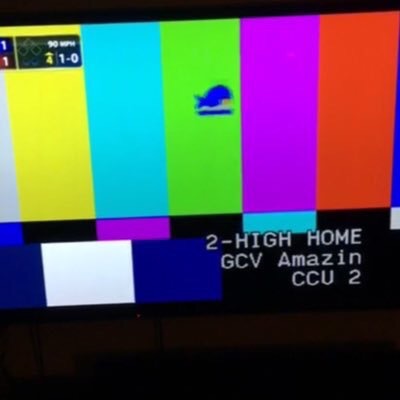Neil Walker
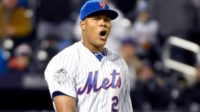
It’s only been 20 games, but there’s a lot to talk about with the Mets. There’s Neil Walker turning into Postseason Daniel Murphy. There’s Noah Syndergaard becoming the ace of the staff. Michael Conforto is already batting third, and he’s already become the Mets best hitter.
Also, the bullpen has been dominant. Really dominant.
The Mets bullpen has recorded with nine saves with a 2.54 ERA and a 1.23 WHIP in 69 appearances. They’ve recorded 78 strikeouts in 63.2 innings pitched. That’s good for a 11.03 K/9. All these numbers are all the more impressive when you consider it includes Rafael Montero‘s 11.57 ERA and 2.571 WHIP. When you back out Montero’s stats, the Mets bullpen would have a 2.20 ERA and an 1.17 WHIP.
Of particular note, Jim Henderson, Hansel Robles, and Addison Reed have been outstanding. They have combined to pitch 29.2 innings with a 1.82 ERA, 1.08 WHIP, and a 12.74 K/9. The group of them have created the perfect bridge to Familia.
All the more impressive is that the Mets bullpen has performed this well without Jeurys Familia getting going. He has a 2.45 ERA and a 1.545 WHIP. However, even with his relative struggles, the he’s still a perfect 7/7 in save opportunities. Even better, he seems to have settled down, and he’s starting to pitch better. Over his last two appearances, he hasn’t allowed a baserunner. Once Familia returns to form, and there is no doubt he will, the Mets bullpen will become even more dominant.
That’s bad news for teams that are trying to get into the Mets bullpen after 6-7 innings against one of the Mets aces. Overall, the Mets not only have the best starting pitching staff in the majors, they really have the best pitching in the majors period.
Editor’s Note: this article was also published on metsmerizedonline.com
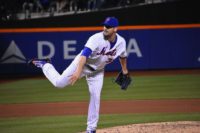
With the Mets recent winning streak and just overall better play, the only issue was Matt Harvey‘s slow start and his mechanics. Four pitches into the game, Zack Cozart hit a homerun. Ivan DeJesus followed with a single. It looked like Harvey was going to struggle again.
Then the Harvey of old emerged. He struck out the next five batters and retired six straight. His fastball was topping 97 MPH. The Reds would cease making hard contact against him. As impressive as that was, the third inning was all the more impressive.
The bases were loaded with one out after two soft singles and a Neil Walker error. Harvey then struck out Eugenio Suarez, and he got Devin Mesoraco out on a soft liner up the middle. Walker made a nice diving play up the middle there to redeem himself after his earlier error. Walker would then redeem himself in the bottom of the third:
9 for Neil! @NeilWalker18 hit his 9th HR of the season. That ties a #Mets record for the most HRs in April. pic.twitter.com/zCIf1andLQ
— New York Mets (@Mets) April 28, 2016
Walker’s homerun would put the Mets up 3-1. The other two runs were scored in the first. Alejandro De Aza, starting in place of Curtis Granderson, scored an unearned run when Lucas Duda reached on a two base error. Duda scored on a Walker RBI single.
Harvey ran into trouble again in the fifth. The Reds hit two infield singles leading to a run scored making it a 3-2 game. Harvey then induced Mesoraco to hit into an inning ending double play. At this point, Terry Collins would’ve been justified pulling Harvey there. He was in line for the win. The defense behind him was sloppy all night. Harvey hasn’t been good so far this year in the sixth. Instead, Collins sent him back out there. He might have had to with a somewhat taxed back end of the bullpen.
Harvey rewarded Collins’ faith by getting a 1-2-3 inning. Harvey’s final line was six innings, seven hits, two earned, one walk, and seven strikeouts. He threw 102 pitches. Most importantly, he got the win. Now, Harvey may not be all the way back yet, but he took an important step. It’s definitely a game to build on.
In the bottom of the sixth, the Mets blew it open against the Reds dreadful bullpen. Eric Campbell, pinch hitting for Harvey, drew a walk. De Aza followed with a walk of his own. Michael Conforto then stepped up to the plate. What was strange was in a 3-2 game with two outs in the inning, the Reds didn’t turn to a lefty. They paid for it when Conforto hit opposite field double to left-center. It was Conforto’s ninth double in 18 games played.
Jim Henderson came on for Harvey in the seventh because it was the seventh inning. He had a 1-2-3 inning with two strikeouts. After Collins’ earlier overuse of him, it appears Henderson is settling back in. Hansel Robles pitched the eighth inning (as he should). He too pitched a 1-2-3 inning with two strikeouts. That’s 15 strikeouts in ten innings pitched for Robles this year. Addison Reed, pitching for the fifth time in six games, pitched the ninth and recorded his first save of the year. He also recorded a 1-2-3 inning except he only had one strikeout. Mets pitching had 12 strikeouts in total.
The Mets have now won six in a row and 11 of their last 13. Shockingly, this was the Mets first series win at home this season. Now after the easy stretch is over, the Mets have tomorrow off (because it’s a Thursday in April), and they welcome the Giants for a weekend series.
Game Notes: In 12 of the Mets 20 games, they have struck out 10+ batters. Yoenis Cespedes was given another night off with his leg contusion despite hitting a homerun last night. Granderson was just given the day to rest. De Aza started in right with Juan Lagares in center.
The Mets saving grace last year was having a healthy and productive Curtis Granderson. While Mets players seemingly ranged from injured to incompetent in the first half of 2015, he kept hitting. He was seemingly the only player who could hit and keep the Mets afloat offensively. On top of that, he was a finalist for the Gold a Glove Award for rightfielders. As he went, the team went.
Even with the arrival of Yoenis Cespedes and his incredible hot streak, it was Granderson who drove the Mets offense. From August 1st until the end of the season, he hit .267/.390/.495 with 45 runs, 14 doubles, one triple, 10 homeruns, and 34 RBI. In the stretch run to claim the NL East, Granderson played even better than he had all season. Like with most team MVP’s, as Granderson went, so did the Mets.
In 2016, the Mets are seemingly falling into the same pattern they did last year.
Through the first six games of the season, Granderson was 1-24 with a single and six strikeouts. He was hitting an abysmal .042/.179/.042. The Mets were 2-4 and were averaging 2.8 runs per game. After those six games, Granderson has taken off and so have the Mets.
Over the past 13 games, Granderson had hit .333/.387/.678 with 13 runs, four doubles, two triples, four homeruns, and eight RBI. In that stretch, the Mets have gone 10-3 and are averaging 5.2 runs per game.
Overall, we can point to many factors for the Mets turnaround. Stellar starting pitching. Terry Collins batting Michael Conforto third in the lineup. Cespedes and Neil Walker hitting homeruns. All of these are very important factors as to why the Mets are now winning. Once again, the success of his teammates is overshadowing Granderson’s contributions.
That’s fine. Granderson is once again on his way to having another big season with the Mets. At the end of the day, he could very well be the team’s MVP for the second straight year. If the Mets perform the way they’re expected, Granderson may very well be in line to recreate his World Series homerun barrage.
If the Mets do return to the World Series, it’ll be because one again Granderson has led them there.
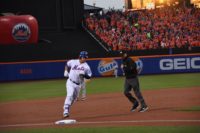
There was a time the Mets relying on the young meant hoping Chris Young‘s shoulder wouldn’t fall apart, or the other Chris Young hitting above the Mendoza Line. The 2016 version is much better.
Tonight, the Mets were carried by two 23 year old superstars – Noah Syndergaard and Michael Conforto.
Syndergaard was throwing so hard he broke the radar guns in Citi Field. With that said, he wasn’t dominating. Of the seven innings he pitched, he had only two 1-2-3 innings.
However, just because he wasn’t dominating doesn’t mean he wasn’t intimidating. In Billy Hamilton laid down a bunt single in the third inning. He then stole two bases leading to the Reds’ only run of the game. Hamilton’s next at bat? Syndergaard buzzed him inside reminding Hamilton he’s 60’6″ away.
Still Syndergaard had some problems. In the sixth, the Reds had runners on second and third with one out. Syndergaard would then strike out Devin Mesoraco and Adam Duvall to get out of the jam. He got them both with sliders.
Speaking of the slider, Syndergaard went to that well too often. After he passed 100 pitches, and the Reds were going to the fourth time through the lineup, they were able to get a two out rally started.
Zack Cozart would chase Syndergaard in the seventh with an RBI single before Antonio Bastardo came in and showed signs of over use. He walked the first batter he faced before allowing a game-tying single to Joey Votto. Logan Verrett came on in relief and got the Mets out of the jam leaving the score tied 3-3.
Syndergaard’s final line was 6.2 innings, seven hits, three earned, no walks, and nine strikeouts.
The Mets would retake the lead on yet another Neil Walker homerun:
.@NeilWalker18 has tied a career best with seven home runs a calendar month. #MetsFacts pic.twitter.com/vim606h1fA
— New York Mets (@Mets) April 25, 2016
#MetsWIN! 5-3 #Mets @NeilWalker18 crushes a 2-run home run in the bottom of the 7th to seal this one. #LoveTheMetshttps://t.co/F9od6tTnSG
— New York Mets (@Mets) April 26, 2016
For his part, Conforto couldn’t make an out. In the first inning, he hit a homer. He followed that with a single in the third. He got a shift double in the fifth. He hit a bloop by the left field line. Suarez got under it, but he still couldn’t make the play. It bounced into the stands for a ground rule double. He walked in the seventh. The cycle was not to be. He’s been amazing since he was called-up, and he’s been better since he started hitting third:
Since moving to the three spot, Conforto is 12-for-35, with eight runs, four doubles, three homers and eight RBIs in 10 games. OK, I guess.
— Laura Albanese (@AlbaneseLaura) April 25, 2016
By the way, Lucas Duda hit another homerun:
#DudaSmash! Watch Lucas Duda's monster 2-run home run >> https://t.co/tFM2CptR4G pic.twitter.com/gyv7lZZTQE
— New York Mets (@Mets) April 26, 2016
In what was a good night overall, there was some cause for concern. Travis d’Arnaud continues to struggle behind the plate. While Syndergaard doesn’t hold runners on well, d’Arnaud’s throws were terrible. He was palming the ball. He was winding up too much. He seemed to be thinking more than reacting. Overall, the Reds were 5-5 in stolen base attempts.
Addison Reed and Jeurys Familia closed out the win.
The game was tougher than it should have been, but it’s still a win. It extended the Mets winning streak to four games. The streak should continue as the Mets are pulling it all together and are beating bad teams like they should.
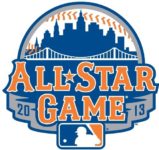
On Sunday April 24th, Major League Baseball opened the voting to select the All Star Game starters. It’s another sign that the system is broken.
The concept of voting for your All Star Game starters is becoming antiquated, if it’s not antiquated already. The concept is that the fans get to vote for the players they want to see play in the game, but that’s not what it is, or what’s is become. Rather, the All Star Game voting has become an opportunity for a fanbase to stuff the ballot box to vote for their favorites. For example, in 2012, the San Francisco Giants fans stuffed the ballot box to make Pablo Sandoval the starting third baseman over the much more deserving David Wright.
Giants fans enthusiasm was much higher than Mets fans at the time with the Giants having recently won a World Series and the Mets being nowhere near contention. It also helped that the Giants’ organization led a huge push to get Sandoval elected. If we’re being honest, it’s not supposed to work this way. We’re not supposed to see fan bases making huge pushes to get their players elected. Rather, the fans as a whole are supposed to select the players that are the most deserving and who they want to see.
And yet, the Giants fans voting enmass for Sandoval fits into the spirit of the All Star Game.
The reason it fits into the spirit is even in the “This One Counts” Era of the All Star Game, each team no matter how bad gets a representative. The classic example is Dmitri Young representing a horrendous Tigers team that went 43-119. If 2003 didn’t force a change, nothing will.
The reason why it hasn’t changed is because the theory is your team having an All Star would generate your interest in watching the All Star Game. The belief is that you’ll tune-in to watch your guy play. Baseball wants to generate interest in the All Star Game, and whether it’s true or not, they believe this will generate fan interest in every city. In essence, Major Leagur Baseball loves when there is a concerted effort in a city to get the fans to vote for someone. It shows that fans care about their team and the All Star Game. The hope is that this translates to more viewers.
Now, if you want to generate as much fan interest as possible, you would want to try to ensure the fans actually get to see the players from their team they would actually want to see play.
For example, in two of his first four seasons with the Mets, Bobby Bonilla was the lone Mets All Star. This is the same player who was wearing earplugs so he couldn’t hear the fans booing him. There were no Mets fans in 1993 or 1995 watching just so they could see Bonilla enter the game. It wasn’t happening. As a result, in these circumstances, you defeat the purpose of the every team represented premise.
No, if your goal is to get the fans from a particular team to watch, you should pick out an All Star that they would actually want to watch play in the game. Better yet, why not let each team’s fans pick their All Star?
Instead of voting for the starters, let everyone vote for the one player from each team they would like to see play in the All Star Game. For the Dodgers, is there any question that player should be Clayton Kershaw? It’s possible Red Sox fans would like the opportunity to have David Ortiz go out as an All Star. If you’re a fan of a team like the Phillies, wouldn’t you want to see how your young hurler Vincent Velasquez pitches against the big boys?
This is also an opportunity the players themselves to market the biggest and brightest stars. Players can ask for people to vote for them and create their own hashtags. Jose Bautista could promise to do another epic bat flip if he’s selected as the Blue Jay’s representative. Maybe a slugger or two can make a reciprocal promise that if chosen they will participle in the Homerun Derby. This could be a chance for players to interact with the fans, let their personalities shine, and make themselves more marketable. Isn’t this exactly what baseball wants?
Also, you can eliminate something inane that has taken place in baseball. You could vote for a starter at every position, but you can’t vote for a pitcher. Doesn’t make sense. Kershaw could be the best pitcher in the game. He’s the pitcher most fans would pay to see pitch, but no, you as a fan cannot voice how much you want to see him pitch. Selecting one player from every roster ends that.
Another bonus is fans get to select more players to the game. Instead of electing 17, they get to pick 30. That’s 30 instead of 17 races to keep an eye on. Fans can get more involved. Throughout social media different factions of fanbase a can argue for their player and try to organize voting for that player.
Now, there are some inherent dangers in allowing fans to pick more players. The selection of say Freddie Freeman for the Braves could block a more deserving first baseman from getting selected. However, that is also a risk inherent in having each team have a representative.
The next hazard is there being too many players at each position. In some strange years, you may get three DH for the American League, which would create some potential roster issues. However, would that be any worse than Joe Torre going with five shortstops and one second baseman to the 2002 All Star Game? Furthermore, having a surplus at one position may force the best players to stay in the game longer, which would also be beneficial for the fans.
Overall, if you want to avoid the issue of having too many players at one position hampering the ability to field a team, expand the All Star Game rosters. It also wouldn’t hurt having an extra player or two to avoid another Milwaukee situation.
Now, there may be some people that would want to select the game’s starting lineups. There is no reason why that has to go away. You can replace voting for the last player to make the team with voting for which All Star gets to be in the starting lineup.
This would give an opportunity for fans to make a push to have their player start the game. Teams can launch their social media campaigns to have their players start the All Star Game. Then in an effort to increase ratings, baseball shouldn’t release the results of the fan vote until the players are introduced at the All Star Game. While we can debate the merits of whether or not more people would watch to see if Daniel Murphy or Neil Walker is the starting second baseman, we should be able to agree more would tune in to watch that than seeing the last All Star on each roster take the field.
One logistical note. This is a time when voting for a pitcher to start the game doesn’t make sense. Pitchers who pitched recently are unavailable to pitch in the game. Therefore, it doesn’t make sense to permit fans to vote for Kershaw only to have him miss the game. Hopefully, this issue is alleviated by the fact that baseball and Dodger fans had the opportunity to vote for him to play in the game during the initial vote.
Overall, implementing these two ideas would create more fan involvement and interest. It would actually let the fans of each team get to see the player they would want to see play in the game. Hopefully, at the end of the day, this will lead to bigger ratings.
When Steven Matz first cracked into the majors with his grandfather jumping up and down, we expected him to do the Jerry Koosman each start. For the uninitiated, Koosman said his job as a pitcher was to shut them out and hit one out. Essentially, a pitcher should be a threat on the mound and at the plate. By the way, Koosman might’ve said that, but he was a terrible hitter.
Tonight, Matz had one of those Koosman dictated games. Matz pitched 6.1 innings allowing nine hits, two earned, two walks, and eight strikeouts. He got touched up was the third when noted Mets killer, Freddie Freeman, hit an RBI double. In the seventh, he ran out of gas, but Hansel Robles came in and got out of the jam. At the plate, Matz went 1-2. Terrible Braves team or not, Matz had a terrific night.
At the plate, the Mets had some firsts. In the first inning, Lucas Duda hit the Mets first sacrifice fly of the year scoring Curtis Granderson, who led off the game with a single and moved to third on a Michael Conforto single. Speaking of Conforto, he would have his first career stolen base in the third inning. After Duda hit his sacrifice fly, Neil Walker walked for the first time this year. Don’t worry, he would add a homerun in the eighth. The second run scored in the first would later score on an error. Sarcastic Mets fans would tell you this is the first time all year the Mets manufactured a run.
In any event, this game was what you would expect, or rather, what we should expect from Braves-Mets games this year. The Mets pitching and offense dominated. Every Mets starter, including Matz, reached base at least once. The Third Baseman Formerly Known as David Wright (RIP Prince) hit two doubles. He was 2-5 with one run, two RBI, and two strikeouts. Once again tales of his demise were greatly exaggerated.
Somewhat surprisingly, Juan Lagares got the start in center for an ailing Yoenis Cespedes. It was surprising because Jhoulys Chacin, who is a right handed pitcher. Before Cespedes was signed, it was presumed there was going to be a centerfield platoon with Alejandro De Aza facing the eighties.
Other than the Lagares -De Aza decision, nothing about tonight was surprising was the Mets domination. Once all was said and done, the Mets won 8-2. They need to dominate teams like this. They need to sweep teams like this. The Mets are in the process of doing that. They’re getting back on track.

When Sandy Alderson, J.P. Riccardi, and Paul DePodesta were first hired by the Mets, everyone assumed the Mets were going to be recreated in the image of the high OBP Scott Hatteberg Oakland Athletics teams.
However, upon reflection of what the Alderson regime has done here, the team has been more focused upon power than they’ve been on OBP. That philosophy was on display last year when Yoenis Cespedes came aboard, and it’s on display again this year:
17 HR by the @Mets in their last 5 games is their most in a 5-game span
Previous: 16 (last season)@EliasSports pic.twitter.com/4NuSWA4t65
— ESPN Stats & Info (@ESPNStatsInfo) April 20, 2016
Over the offseason, the Mets brought in three players to play everyday. There was the aforementioned Cespedes with his career .320 OBP. Cespedes also hit 35 homeruns last year while slugging .612 as a Met. Neil Walker has a career .336 OBP, but he averages 16 homeruns per year. He led all Major League second basemen in homeruns last year. Asdrubal Cabrera was signed to be the new shortstop. He has a career .329 OBP, but he did hit 15 homeruns last year.
That’s not to suggest the Mets do not value OBP. This is the same team that did choose Lucas Duda over Ike Davis, in part because Duda got on base more frequently. Rather, it shows the Mets put more emphasis on homerun power than OBP. The Mets aren’t looking to clog the bases and manufacture runs. Rather, they are looking for players that can change an inning or a game with one swing of the bat.
This shouldn’t surprise anyone.
Let’s re-examine that fabled 2002 Oakland Athletics Moneyball team. As we know, they actively sought out players like Hatteberg because they were undervalued and could get on base. That year, the Athletics ranked fourth in the AL and seventh in the majors in OBP. The same year, the Athletics ranked fourth in the majors (and the AL) in homeruns. While the Athletics no longer had Jason Giambi, one through nine, their lineup still had players that could hit the longball. The OBP got the headlines because it was a shift in how people viewed baseball, but the homeruns are what powered that Athletics offense.
The Athletics being powered by the longball wasn’t anything new or groundbreaking. It was what powered the Athletics when Alderson was the GM. From 1988 – 1990, the Athletics went to three World Series winning one. In 1988, the Athletics were ranked second in the majors and the AL in homeruns. Their rankings slipped in 1989 to seventh in the AL and eleventh in the majors, in part due to injuries like Jose Canseco‘s wrist, but the Athletics rose back up the ranks in 1989. In 1989, the Athletics were ranked third in the AL and fourth in the majors in homeruns.
Overall, Sandy Alderson, J.P. Riccardi, and Paul DePodesta have built teams that hit homeruns. Even if everyone expected different, this regime is doing what they’ve always done, and that’s building an offense based on their batters hitting homeruns. By the way, when they’ve successfully accomplished this goal, they’ve won a lot of games and went to the postseason.
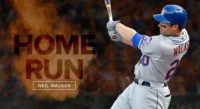
Thank goodness for PIP (picture in picture) technology. Because of that, I was able to watch both the Mets-Phillies game and Game Three between the Rangers and Penguins. By the way, if not for my wife and the Declaration of Independence, I’d propose getting rid of Pennsylvania a together.
In any event, the Mets did all people who were both Mets and Rangers fans a huge favor tonight by blowing out the Phillies and giving Rangers fans something to cheer about.
While the Phillies have terrific young starting pitching, we were reminded of the perils of relying on young pitching. While Vincent Velasquez has pitched incredibly well this season (including a terrific game against the Mets), he struggled against the Mets. The Mets jumped on him right away when Michael Conforto hit a two run homer in the first. It was not a good start for Velasquez who only lasted 4.1 innings allowing five hits, five runs (two earned), no walks, and four strikeouts. With the Phillies bullpen, the game was over once Yoenis Cespedes did this:
Watch @ynscspds do bad things to this baseball >> https://t.co/9FZRBHOap4. 5-0 #Mets! ?https://t.co/9ONhf9egGN
— New York Mets (@Mets) April 20, 2016
This was more than enough for Logan Verrett, who once again had a terrific spot start. Verrett would go six innings allowing six hits, no runs, one walk, and four strikeouts. He seemingly had someone on every inning, but he navigated how way through all the trouble.
Overall, it was the type of night you expected from a World Series contender against a team that’s expected to contend for the first pick in the draft. The Mets offense went off hitting six homeruns. Aside from the aforementioned homeruns, the Mets got homeruns from Lucas Duda, Curtis Granderson, and two from Neil Walker. Walker gave one a ride in the ninth but fell just short of a three homerun game. All told, the Mets would score 11 runs.
Things went so well, there was even a Rafael Montero sighting. Keep in mind, that was only after Terry Collins pitched Jim Henderson of an inning to protect the then 9-0 lead. As always, the seventh inning belongs to Henderson.
Montero wasn’t good. He allowed two hits, one earned, one walk, and two strikeouts. It would’ve been much worse if not for a Gold Glove play by Juan Lagares, who came into the game after the blowout started, robbing Maikel Franco of a homerun:
Juan doing Juan things. #Juanderful @juanlagares2https://t.co/a7kqGxuajP
— New York Mets (@Mets) April 20, 2016
Naturally, Collins gave the ball to Hansel Robles in the ninth to preserve the 11-1 victory rather than letting the long man Montero, who will soon be sent back to Triple-A, finish the game.
Right now, the Mets are beginning to get in a rhythm and are beating up on bad teams. It’s what they did very successfully last year. It’s what they’ll need to do in order to return to the postseason.
Game Notes: The Mets are back over .500 at 7-6. Every Mets starter got a hit, including Verrett, who had his first career hit. Verrett has not allowed a run in 12 innings as a starter. Travis d’Arnaud returned to the lineup after getting hit on the elbow on Saturday. The referees are still calling the Rangers-Penguins one-sided even as Sidney Crosby asks for the Rangers to get a game misconduct for giving him a mean look. Rangers trail the Penguins 2-1 in the series.
* photo from the Mets Twitter account
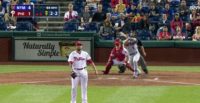
So far this season, two of the positive story lines, even when the team was really struggling was David Wright playing like the David Wright of old, and the continued development of Noah Syndergaard. Both were on display tonight.
Just like when Wright first came off the DL last year, he homered tonight in his first at bat in Citizen’s Bank Ballpark:
#DavidWright delivered an oppo ? in the first inning. #Metshttps://t.co/HIgn4DcI9E
— New York Mets (@Mets) April 18, 2016
He also made a nice bare-handed play in the field:
A little variation on vintage David Wright: https://t.co/Y2uGh85KEZhttps://t.co/Nx1yXyAIdS
— MLB (@MLB) April 19, 2016
The Mets needed Wright because once again runs were hard to come by against a Phillies starter. The Phillies young starters are very underrated. Tonight, it was Jerad Eickhoff. Once again, he showed a filthy 12-6 curveball. He would pitch seven innings allowing five hits, two earned, three walks, and nine strikeouts. He lowered his ERA to 1.89.
In the sixth, the Mets broke a 1-1 tie with a two out rally. Yoenis Cespedes would hit a triple, and he would score on a Lucas Duda RBI single. With Duda is struggling this year, he is hitting 4-10 with RISP. It was not the last time we would hear from Duda. For his part, Cespedes showed no ill effects from the bruised leg in the field on the basepaths.
The real mystery from tonight was how in the world the Phillies scored the one run. Syndergaard was throwing fastballs that appeared to be 101.9 MPH. His fastball was hovering around 100 MPH all night. His slider was hovering around 95 MPH all night. His change was around 90, and his curveball, or Thor’s hammer, was around 85 MPH. His stuff was once again practically unhittable.
Overall, Syndergaard pitched seven innings allowing five hits, one earned, two walks, and eight strikeouts. This actually raised his ERA to 0.90.
Once Eickhoff left the game, the Mets began to tee off against a terrible Phillies bullpen. In the eighth, Duda hit a laser to right field for his first homerun of the season.
Neil Walker would go back-to-back with an opposite field homerun to left. It was his fourth of the year. In the ninth, Wright would hit his second homerun of the game. Both were opposite field shots. They turned a tight 2-1 pitcher’s duel into a comfortable 5-1 win.
Antonio Bastardo pitched a scoreless eighth. Jeurys Familia came into a non-save situation. On the one hand, it could’ve been your typical closer struggling in a non-save situation. It also could’ve part of what has been, at least for him, a tough start to the season. Familia let up a single and double before settling down. He got the next three out, but not before allowing a run to score on a fielder’s choice. Fortunately, Familia finally shut the door before allowing a run preserving the 5-2 win.
The Mets are back to .500, and with a soft part of their schedule this week, the Mets look to be ready to take off.
Game Notes: The Mets hitters continue to strike out a lot. Tonight, they struck out 11 times. Mets have hit 23 homeruns in their last 11 games at Citizen’s Bank. Travis d’Arnaud missed the game with the bruised elbow. In the eighth, Juan Lagares was double switched into the game forcing Michael Conforto to the bench. The Mets allowed three stolen bases including two when Syndergaard was on the mound. It’s the one thing he doesn’t do well. In the fourth, when Duda popped out, a whale appeared on the screen:

I have a bone to pick with Sandy Alderson. No, it’s not the offense that isn’t hitting. They should hit eventually. Well, we at least hope they will. No, it’s when Alderson dubbed Mets fans “Panic City.”
Let’s remember the context of that gem. The Mets were one game over .500, lost six of their last 10, and were 3.5 games behind the Nationals. They had allowed 14 more runs than they had scored. The Mets had scored the third fewest runs in baseball. The Mets had gone from seven games over .500 with a 4.5 game lead in the division (5.0 games over the Nationals) to falling in the standings. The Nationals were hot, and they were getting better. The Mets were seemingly falling apart while their General Manager was mocking the fans.
Funny thing is the Mets got worse offensively after that. It got to the point where fans were EXPECTING Clayton Kershaw to pitch a perfect game. Not too long after that, the Mets got healthy, made some trades, ran into a cushy August schedule, and they took off. Panic City was forgotten.
Until now.
The Mets are grossly underperforming now. In five of the Mets six games, they’ve scored three runs or less. Terry Collins is batting low OBP guys in front of high OBP guys, and he’s stacking lefties (yes, with Neil Walker‘s L/R splits, he’s effectively a lefty). Mets fans are annoyed as well they should be. But no, that’s not how it’s characterized. Because of Alserson’s comments, we’re “panicking”:
Collins on #PanicCity fretting #Mets' 2-4 start: "It's drama here. It's not drama in Milwaukee. It's not drama in Houston. It's drama here."
— Anthony DiComo (@AnthonyDiComo) April 12, 2016
can't believe the panic i'm hearing out of ny/nj/conn over 2-5. mets will be fine.
— Jon Heyman (@JonHeyman) April 13, 2016
Panic City, assemble!
— Matt Ehalt (@MattEhalt) April 10, 2016
Everybody’s a comedian.
Look, no matter what happens from here on out whenever the Mets have a tough stretch this fan base is going to be mocked for panicking. Honestly, I do not know one Mets fan panicking. Not one. I know if people raising legitimate concerns about a lineup that strikes out a lot and doesn’t have high OBP. But that’s not panic, that’s reality.
I haven’t heard one person declare the season over, demand a trade, or call for Collins to be fired. There’s no panic. There’s just really justifiable frustration over a team that’s not hitting, losing to bad teams, and wasting some good pitching performances. No, Mets fans are colored as being unreasonable and overly reactionary.
We will never see the article about how right the Mets fans were in 2015. We will not see how that the fans were 100% right in their complaints. We will not see how the fans were right about demanding that Michael Conforto be called up. However, we will see articles and tweets demeaning the fanbase once again calling them “Panic City” as if Mets fans should enjoy really bad offensive baseball.
It’s all because Alderson thought he was hilarious in demeaning Mets fans one day when they were irritated watching an inept offensive club ruining start after start. Apparently, realizing a team that finds runs hard to come by is panicking. A fan base that wants their General Manager is panicking. Apparently, not being happy with a team playing poorly against a weak early schedule is panicking.
Thanks for that Sandy.
